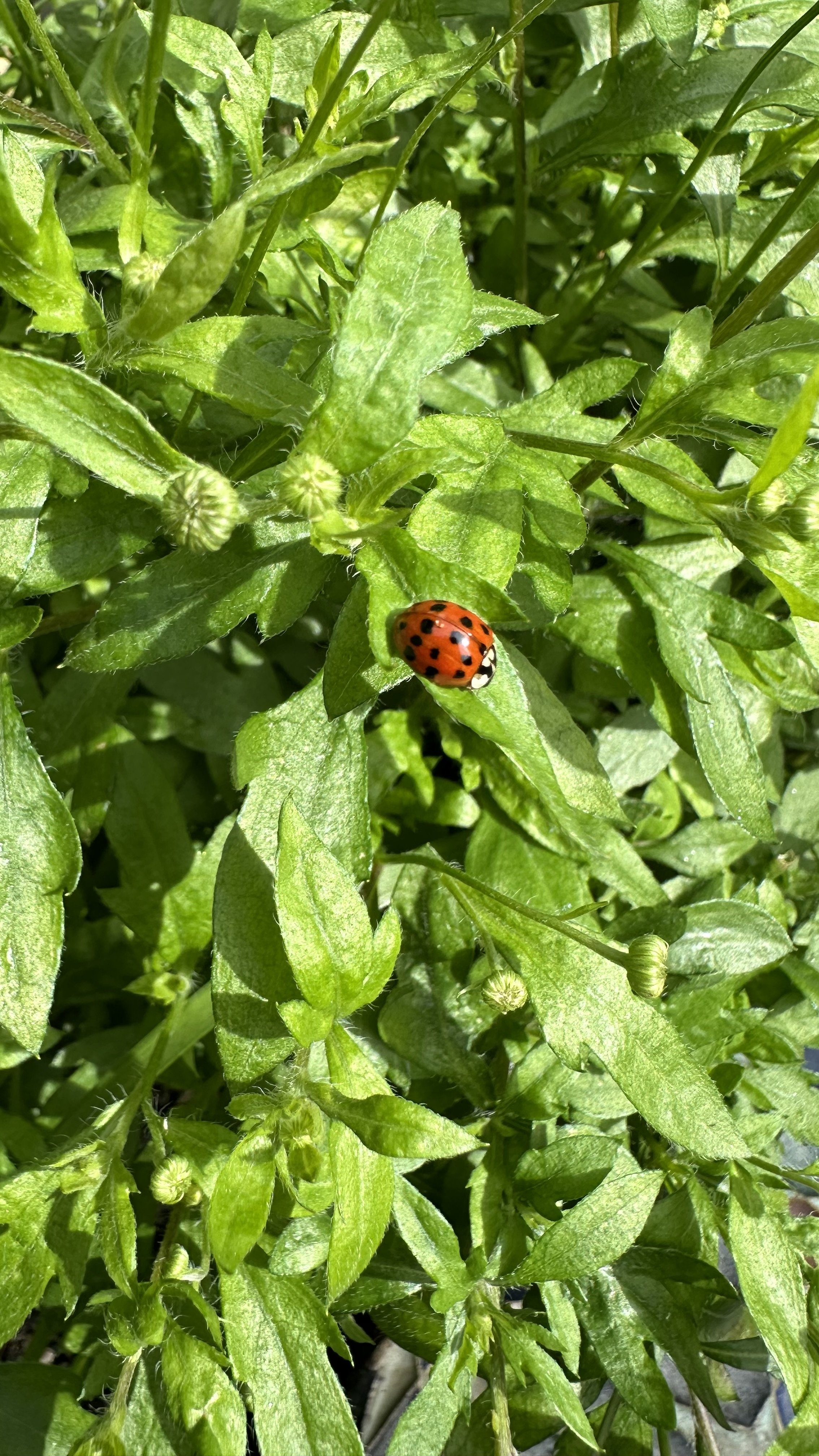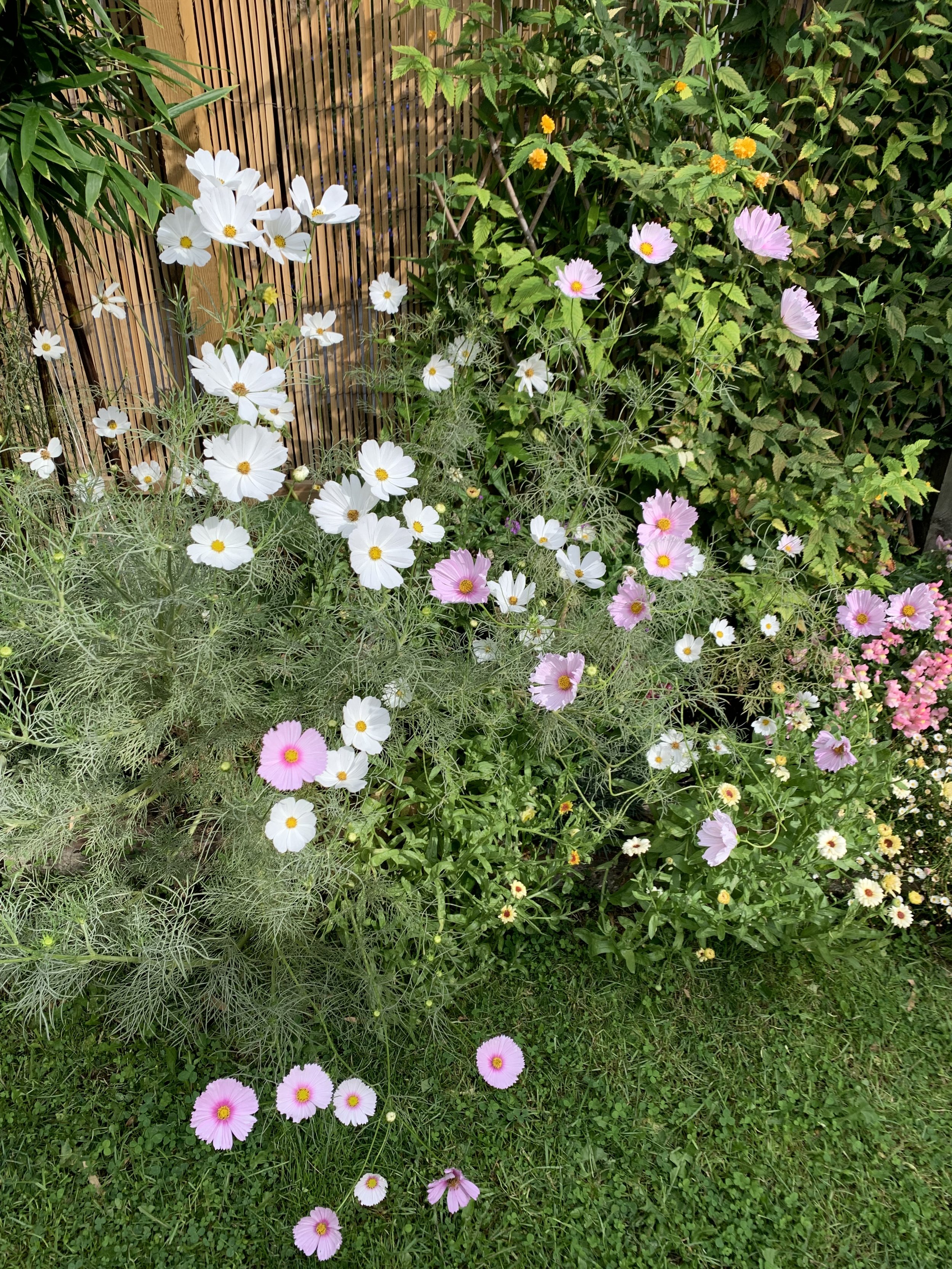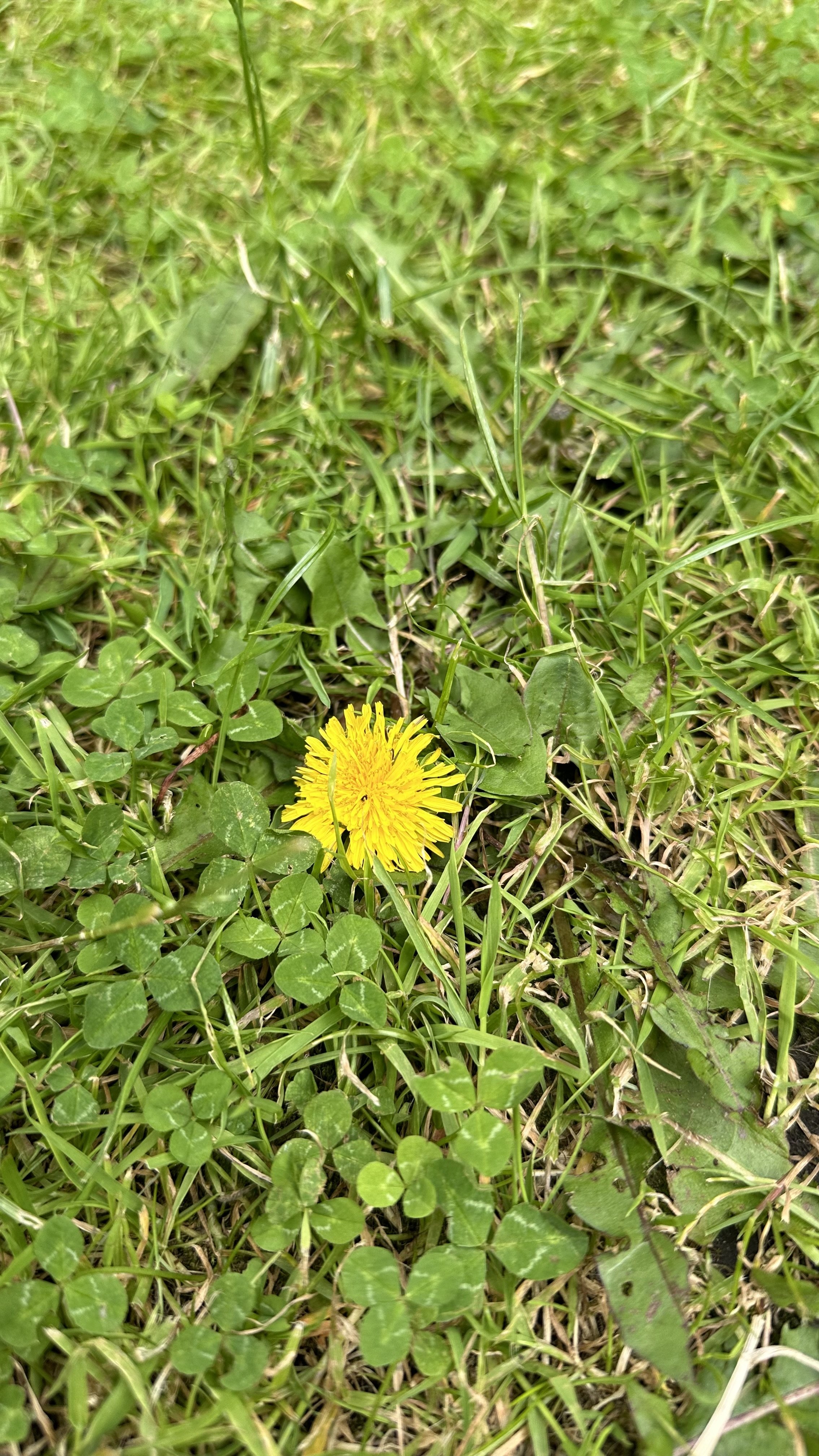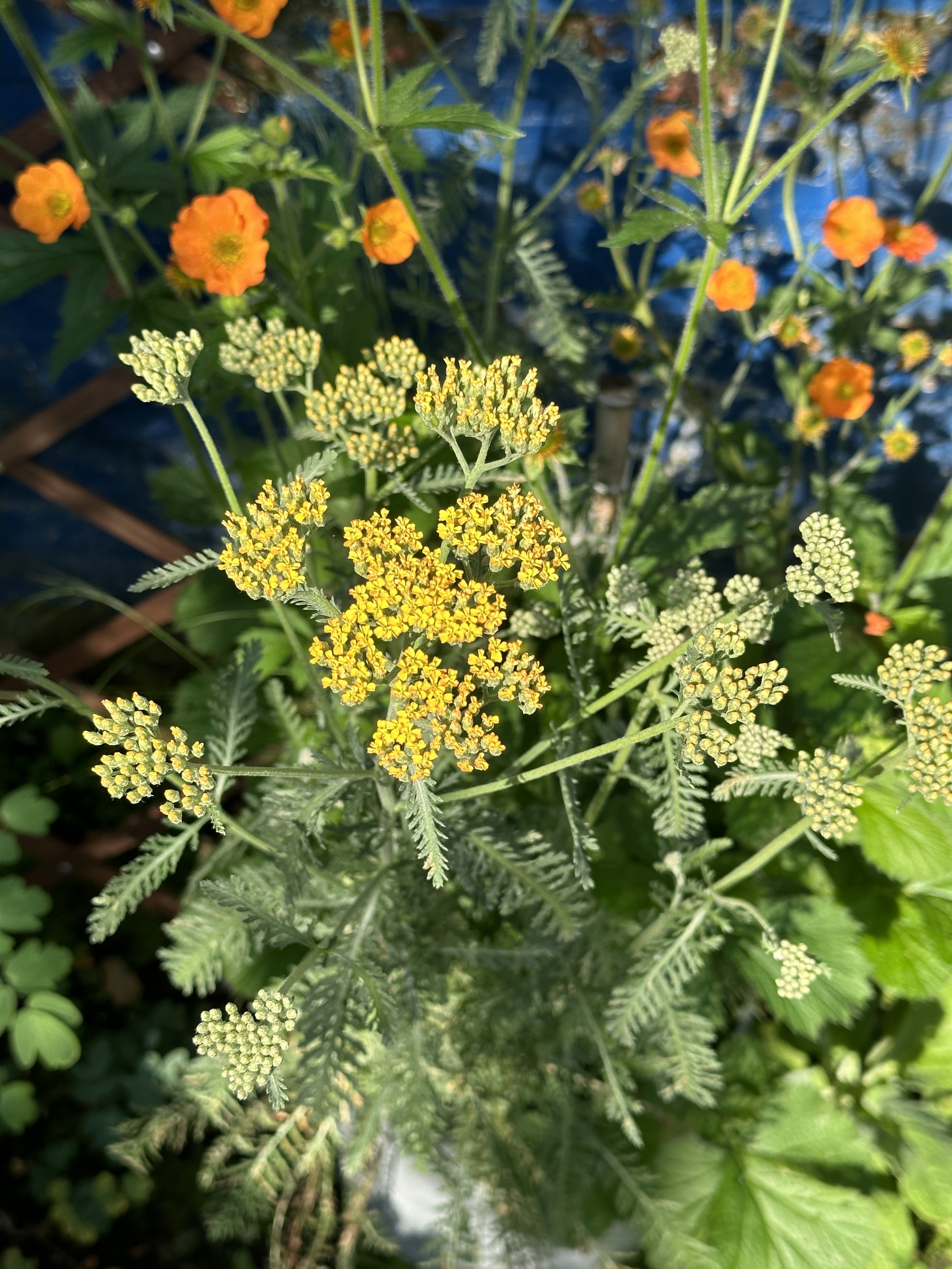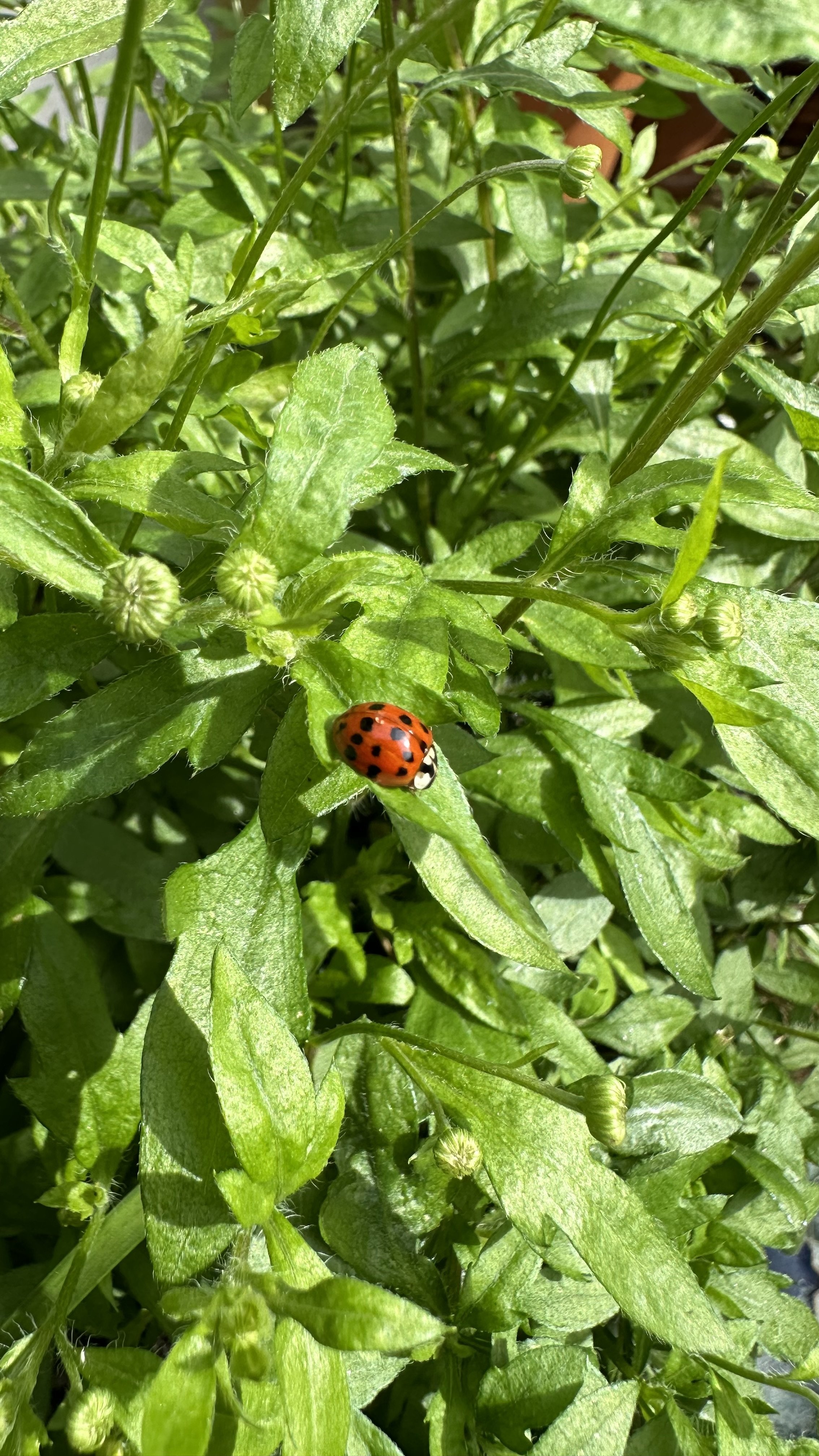Flowers That Attract Ladybugs For Natural Pest Control
This website is reader-supported - thank you! This post may contain affiliate links. As an Amazon Associate, I earn from qualifying purchases at no extra cost to you.
Ladybugs aren’t just cute; they’re also some of the best natural helpers for keeping your garden healthy.
These beneficial insects feast on aphids, scale insects, and other pests, making them a gardener’s best friend.
One of the simplest ways to invite them into your garden is by planting flowers they love.
Here's everything you need to know about flowers that attract ladybugs and how to create a ladybug-friendly space.
For more tips on attracting beneficial insects, check out my guide:
Lady bug on the leaves of Erigeron Karvinskianus (Santa Barbara Daisy).
Why Attract Ladybugs to Your Garden?
Ladybugs are often considered a gardener’s secret weapon, and for good reason.
These brightly colored insects aren’t just fun to watch—they play a crucial role in maintaining a healthy, thriving garden.
Here’s why attracting ladybugs to your garden is such a smart move:
1. They Are Natural Pest Controllers
Ladybugs are voracious eaters when it comes to common garden pests.
A single ladybug can consume up to 50 aphids a day and thousands over its lifetime.
In addition to aphids, they feed on scale insects, mealybugs, spider mites, and whiteflies—critters that can wreak havoc on your plants.
By inviting ladybugs into your garden, you can reduce pest populations without the need for chemical sprays.
For more natural pest-repellant ideas, check out my guide:
2. Their Larvae Are Even More Efficient
Ladybug larvae may not look like the iconic red-and-black adults, but they’re just as hardworking.
These tiny, alligator-like creatures eat even more pests than their adult counterparts.
Encouraging ladybugs to reproduce in your garden ensures a continuous cycle of pest control.
3. Chemical-Free Gardening
Using pesticides can harm beneficial insects, including ladybugs.
By attracting these natural helpers, you can minimize the use of harmful chemicals in your garden, creating a safer environment for your plants, pets, and family.
For more ideas on keeping your garden free of chemicals, check out my guide:
4. They Protect a Wide Range of Plants
Ladybugs don’t just help ornamental flowers—they’re also fantastic allies in vegetable gardens.
Aphids and other pests that target tomatoes, peppers, cucumbers, and lettuce are prime targets for ladybugs.
Keeping these insects around can save your crops and boost your harvest.
For more plant protection tips, check out my guide:
Plants That Deter Cats: A Natural Solution to Keep Cats at Bay
Top 9 Flowers That Attract Ladybugs
Ladybugs are naturally drawn to flowers that provide nectar, pollen, or shelter—elements they need to thrive.
By planting the right flowers, you can encourage these beneficial insects to settle in your garden and help manage pests.
Here are the best flowers to attract ladybugs and why they’re effective.
1. Marigolds
Marigolds are famous for their pest-repelling properties, but they also do a great job of attracting ladybugs.
Their bright orange, yellow, and red blooms are a beacon for these insects.
While marigolds deter harmful bugs, they simultaneously invite ladybugs to feast on the ones that do manage to sneak through.
Why Ladybugs Love It: Their colorful blooms are easy to spot, and they offer nectar.
Bonus Tip: Marigolds are fantastic companion plants for tomatoes and peppers, helping ladybugs patrol these often-affected crops.
My favorite marigold seeds:
For more companion planting ideas, check out my guide:
2. Cosmos
Cosmos are one of my favorite things to grow, and ladybugs also love them.
These tall, feathery plants produce flowers in a wide range of colors, including pink, white, and some really fun peachy colors.
Their extended blooming period ensures that ladybugs and their larvae have a consistent food source throughout the growing season.
Why Ladybugs Love It: Abundant nectar and pollen supply over a long period.
Bonus Tip: Plant cosmos near areas prone to aphid infestations, such as roses or cucumbers.
My favorite cosmos to grow:
Cosmos can even be grown in small spaces, check out my guide:
3. Dandelions
Although often considered weeds, dandelions are a surprising ally in attracting ladybugs.
Their bright yellow flowers are an early-season food source, offering nectar when other plants have yet to bloom.
I let a few dandelions grow in my lawn and try to give ladybugs the early boost they need to establish themselves in your garden.
Why Ladybugs Love It: Early-season blooms that provide nectar.
Bonus Tip: Keep dandelions under control by limiting their spread to specific areas of your garden.
4. Fennel and Dill
Herbs like fennel and dill are favorites for ladybugs, particularly their larvae.
These plants produce feathery foliage and tiny yellow blooms that are irresistible to ladybugs and other beneficial insects.
Why Ladybugs Love It: These herbs attract both adult ladybugs and larvae, ensuring multiple generations stick around.
Bonus Tip: Allow fennel and dill to flower for the best results—this is when they’re most attractive to ladybugs.
My favorite dill to grow:
For more herb growing tips, check out my guide:
5. Calendula (Pot Marigold)
Calendula, also known as pot marigold, is one of those flowers that can do it all.
Not only does it brighten up your garden with its yellow and orange blooms, but it’s also a magnet for ladybugs.
It thrives in cooler weather and is ideal for extending the ladybug season into early spring or fall.
Why Ladybugs Love It: Cool-season blooms and ample nectar.
Bonus Tip: I like to use calendula as a border plant to draw ladybugs to high-traffic pest areas.
My favorite calendula to grow:
For more border ideas, check out my guide:
6. Yarrow
Yarrow is one of those garden staples that does so much more than look pretty.
This hardy perennial produces clusters of tiny flowers in shades of white, yellow, and pink, adding a soft, natural wildflower-look to your garden.
Even better, its long-lasting blooms are a magnet for ladybugs, lacewings, and parasitic wasps, making it great for natural pest control.
Why Ladybugs Love It: The nectar-rich flowers and dense foliage create the perfect spot for feeding and hiding.
Bonus Tip: Yarrow is tough as nails and thrives in poor soil, so it’s a great choice if you’re looking for something beautiful and easy to care for.
My favorite yarrow to grow:
Erigeron Karvinskianus before flowering.
7. Erigeron Karvinskianus (Mexican Daisy)
If you’re looking for a flower that’s both charming and practical, Erigeron Karvinskianus—or Mexican daisy—is a great choice.
I have so much of it growing in my garden and I love how the delicate little blooms start out white and fade to pink.
Ladybugs love the extended nectar supply these flowers provide, and the dense foliage offers them a cozy spot to settle.
Why Ladybugs Love It: Mexican daisies bloom for months, making them an irresistible, long-lasting buffet.
Bonus Tip: I like to plant Erigeron along garden pathways or near walls where they can trail over the edges and add a cottage-garden vibe while keeping ladybugs happy.
My favorite seeds:
Learn more about growing Mexican daisy here:
Erigeron Karvinskianus: Growing Ground Cover for Pollinators
8. Nasturtium
Nasturtium is one of those plants that does it all—it’s gorgeous, easy to grow, and incredibly helpful in the garden.
With their bright orange, yellow, or red blooms, nasturtiums not only draw ladybugs but also work as natural "trap crops" by luring aphids away from your vegetables.
This makes them a win-win: they feed the ladybugs and protect your crops at the same time!
Why Ladybugs Love It: The sweet nectar and aphids that nasturtiums attract make them a ladybug favorite.
Bonus Tip: I always plant nasturtiums near my tomatoes, where they help keep pests in check while adding a nice pop of color to the garden.
Here are some of my favorite nasturtiums to grow:
To learn more, check out my guides:
Utilizing Nasturtium Companion Plants for Natural Pest Control
9. Queen Anne’s Lace
Queen Anne’s lace, with its delicate white flowers, resembles a tiny buffet for ladybugs.
Its flat, umbrella-like flower clusters (umbels) are perfect landing pads for ladybugs, lacewings, and other beneficial insects.
This plant’s ability to attract multiple pest-eating species makes it a must-have for natural pest control.
Why Ladybugs Love It: Easy access to nectar and a favorite for ladybug larvae.
Bonus Tip: Pair Queen Anne’s lace with other wildflowers for a meadow-like garden bed that attracts a variety of insects.
Here are the Queen Anne’s lace seeds I recommend:
For more inspiration, check out my guides:
How to Create a Ladybug-Friendly Garden
Building a garden that’s irresistible to ladybugs means providing food, shelter, and the right environment.
Here’s how to create the perfect habitat for them:
1. Choose Ladybug-Attracting Plants
We discussed the best plants for ladybugs above, but the first step to attracting ladybugs is definitely going to be growing the right plants.
Ladybugs love flowers that produce nectar and pollen, as well as plants that host pests like aphids (their favorite food).
Include a Variety of Plants: Mix annuals, perennials, and herbs, such as nasturtium, marigolds, and fennel, with flowering vegetables like tomatoes.
Focus on Native Plants: Native plants are better adapted to your area and more likely to attract local ladybugs.
Bonus Tip: Choose plants that bloom at different times so ladybugs have a steady food supply throughout the year.
2. Keep a Few Pests Around
It might sound odd, but a few pests are necessary to bring ladybugs into your garden.
Aphids, whiteflies, and scale insects are their main food source.
Don’t Overreact to Pests: Instead of trying to wipe out every pest, leave a manageable number as food for ladybugs.
Target the Worst Areas: Plant flowers that attract ladybugs near problem spots, like roses, peppers, or beans.
3. Avoid Pesticides
Even organic pesticides can harm beneficial insects like ladybugs.
Use Natural Pest Control: Instead of sprays, encourage a balanced ecosystem with ladybugs, lacewings, and parasitic wasps.
Handpick Pests: If pests get out of hand, pick them off by hand to avoid hurting the good bugs.
For more eco-friendly gardening tips, check out my guide:
4. Provide Shelter
Ladybugs need safe spaces to rest, lay eggs, and overwinter.
Low-Growing Plants Work Best: Herbs like thyme and flowers like nasturtium provide perfect hiding spots.
Leave Natural Debris: A small pile of leaves, twigs, or mulch gives ladybugs a cozy winter retreat.
Add a Ladybug House: For extra support, set up a ladybug house to give them a designated space, like this really cute one:
5. Create a Year-Round Habitat
Ladybugs are most active in warm months but need shelter in winter to survive until spring.
Plant Evergreens: Evergreen shrubs like juniper or yew can provide shelter year-round.
Skip the Over-Cleaning: Avoid raking up every leaf in the fall—ladybugs might be hiding there.
6. Avoid Over-Mulching
Mulch is great for plants, but too much can make it hard for ladybugs to move around.
Keep It Light: Leave some open spaces so ladybugs can navigate your garden easily.
7. Release Ladybugs Thoughtfully (If Needed)
If you decide to purchase and release ladybugs, there are a few tricks to help them stay put.
Choose Native Species: Non-native ladybugs may not adapt well and can disrupt the ecosystem.
Release at Dusk: Ladybugs are less likely to fly away if released in the evening when it’s cooler.
Provide Food and Shelter: Release them near pest-prone plants and flowers to give them a reason to stick around.
Check out my guide:
Quick FAQs
How do I attract ladybugs to my vegetable garden?
Planting flowers like marigolds, cosmos, and nasturtiums near your vegetables will draw ladybugs.
These flowers provide nectar, while pests on your vegetables become their main food source.
For more ideas, check out my guide Top 10 Flowers to Plant in Your Vegetable Garden.
Do ladybugs eat flowers?
No, ladybugs do not eat flowers.
They primarily feed on pests like aphids and scale insects, which can damage flowers and plants.
Are ladybugs good for plants?
Absolutely!
Ladybugs are excellent for plants because they eat pests that can harm flowers, herbs, and vegetables.
What attracts ladybugs in Florida?
In Florida, plants like dill, fennel and marigolds thrive and attract ladybugs naturally.
The warm climate makes it an ideal environment for these insects.
How can I attract ladybirds to my garden in Australia?
Opt for native plants that flower abundantly, such as bottlebrush and wattle, along with classic ladybug-attracting plants like daisies and marigolds.
For more ideas, check out my guide:
Wrap-Up
Keeping ladybugs in your garden is one of the easiest and most natural ways to manage pests like aphids and scale insects.
By planting flowers like marigolds, cosmos, and Queen Anne’s lace you can create a habitat that attracts and supports these hardworking little bugs.
Beyond pest control, lady bugs bring life and balance to your garden, making it a healthier and more enjoyable space.
With a few thoughtful choices, you can invite these beneficial insects to stay, thrive, and help your garden flourish year-round!
Pin this post to save it for later!
